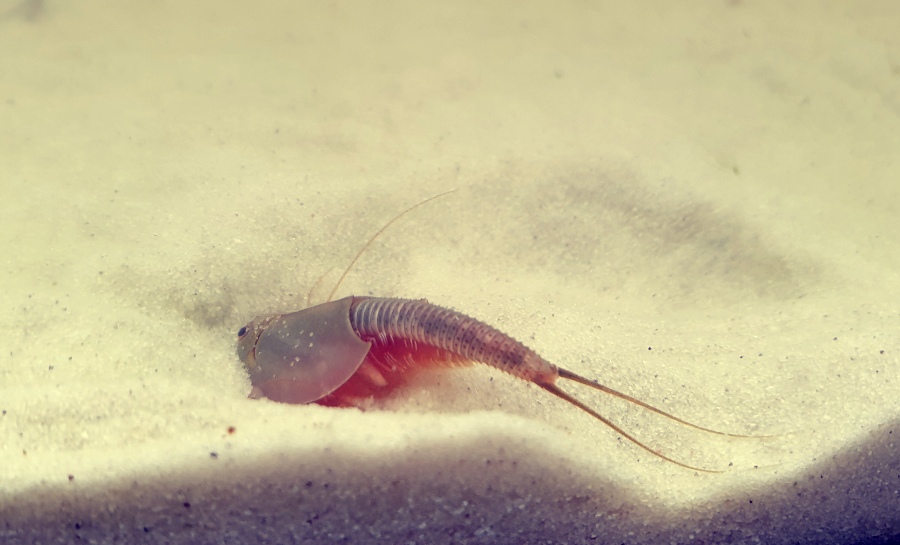Guide
The right substrate for Triops breeding
Besides the aquarium technology, the substrate is essential for Triops breeding, so that the primeval crustaceans feel comfortable in the aquarium. Triops are passionate diggers and need a lot of sand to satisfy their natural urge. When breeding, there is no need to worry about sand yet. A breeding set-up consists of a mixture of eggs and sand and no additional sand needs to be added to the breeding tank. Only when the Triops have been moved to a larger tank or aquarium, the substrate is set up. The right substrate is not only important for the biological balance in the aquarium, but also to prevent injuries to the Triops. In this article I explain what is important for the substrate for Triops breeding.

Substrate for Triops breeding in the aquarium
After our Triops have reached a size of about one centimetre – which is the case after about ten days – they are big enough to be relocated to a larger tank or aquarium. In order to provide the animals with the optimal environment in which they feel comfortable, the substrate for breeding Triops should be selected with special care. Not every substrate is suitable for Triops breeding. Too coarse sand or sharp objects can harm the Triops.
Triops are passionate diggers by nature and lay eggs in the sand after reaching sexual maturity. They also dig in the sand and look for food. With this in mind, we must already make sure when setting up the aquarium that the substrate is at least one centimetre high, ideally three to four centimetres. This way, the Triops have enough sand to dig in and can satisfy their natural needs as well as lay eggs.
Substrate for Triops breeding: Aquarium sand or aquarium gravel?
When choosing the optimal sand for the Triops, we have the choice between aquarium sand and aquarium gravel. Both are similar, but the basic difference between sand and gravel is the lower density. With sand, the space between the particles is smaller in contrast to gravel. The advantage of sand is that it is difficult for dirt particles to penetrate. This ensures that the natural balance is maintained.
The sand colour is not decisive for breeding, but can visually beautify the aquarium. Both natural white and darker sand types can be used. With light sand, darker species such as Triops granarius and Triops cancriformis show up better. Another advantage of light sand is that algae and dirt are easier to see. The sand should be sanded and have a grain size of less than one millimetre. A grain size that is too large is an obstacle for the Triops, as they cannot burrow and lay eggs in the sand.
Ground granulate, sand box sand, quartz sand
The sand should not have any sharp edges and no sharp objects or stones should be used as decoration. The sand should be sieved several times, washed, free of lime and germs, ph-neutral and free of organic impurities. If there are many plants in the aquarium, soil granulate can be used, which enables better plant growth through natural nutrients. Besides aquarium gravel and aquarium sand, quartz sand or sandbox sand can also be used as substrate for Triops breeding.
- Triops – Survivors of prehistoric times, heroes of the universe - 17. April 2025
- Aquaristics in Italy – Underwater passion between the Dolce Vita and the Mediterranean - 12. April 2025
- Palaeontology: Giant penguins discovered in Peru - 2. April 2025